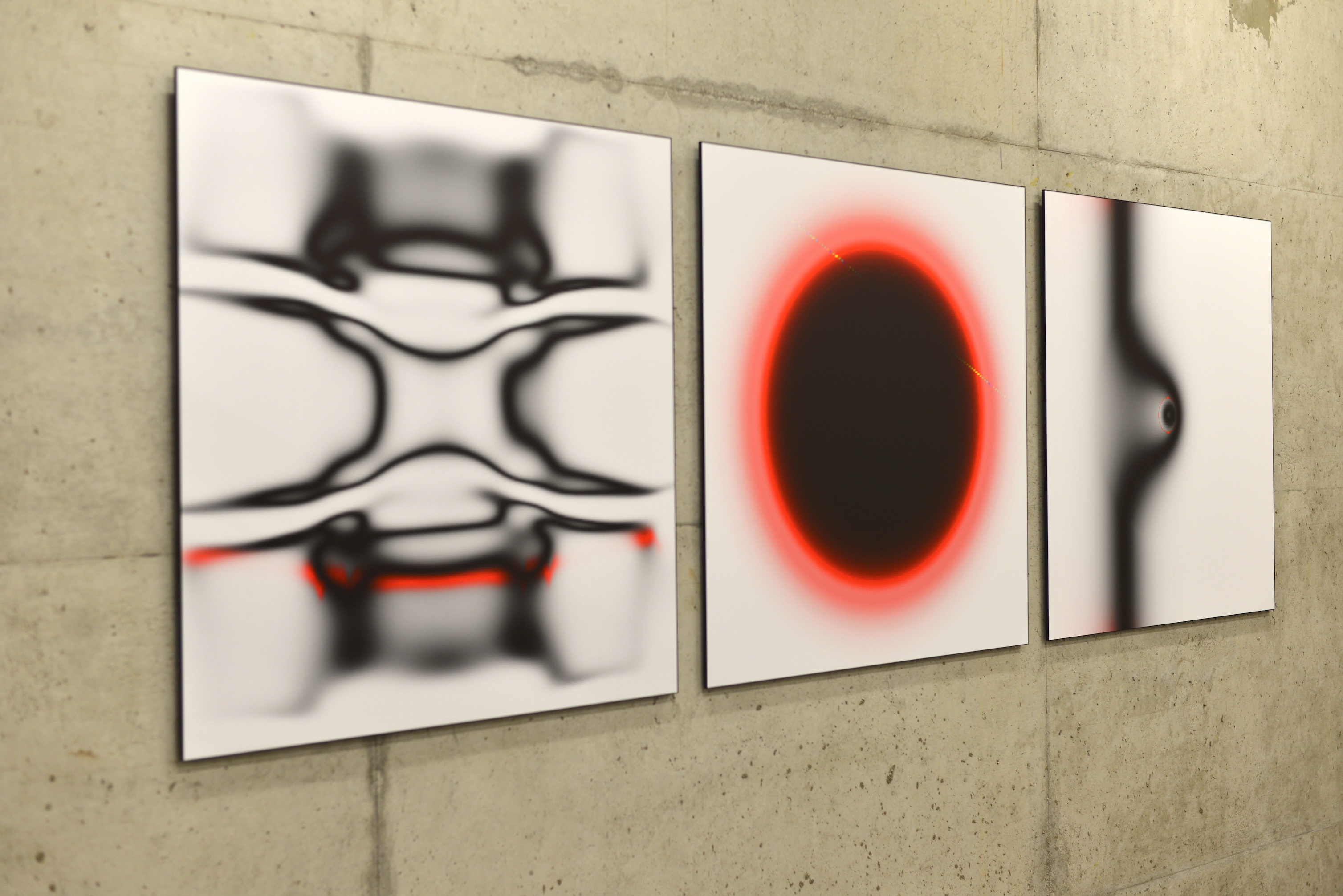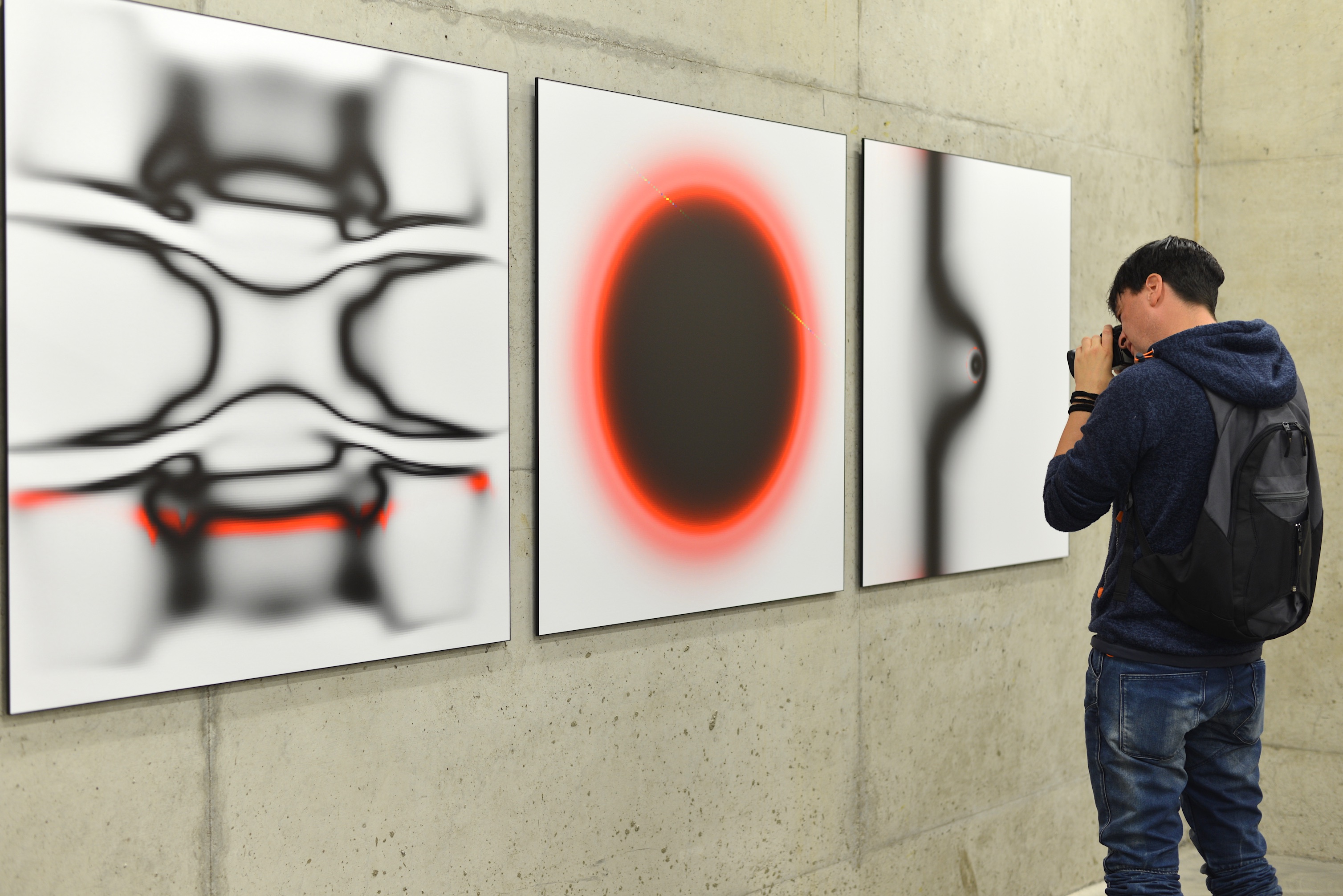DEEP NEURAL PAINTINGS (2015)
Keywords
PAINTING, NEURAL NETWORKS, AI, DISRUPTIVE CAMOUFLAGE, SECURITY, HACKTIVISM
Intro
The Deep Neural Paintings Series is a spin-off from the Rzl-Dazzle-AI project (also on this website). Here we questions how AI’s like Deep Neural Networks SEE the world, how easily we can fool them and how they can become a co-author in the creation process.
Aim
“My aim is to develop a contemporary version of Razzle Dazzle, a camouflage technique dating back from WOI (1), which misleads any AI/DNN (2) powered machine (e.g. drones) by messing up their labelling and metadata system.“ Frederik De Wilde
Security and Hacktivism: “Can Art Save Lives in The 21st Century?”
“I am fascinated how art, war and biomimicry are (historically) connected. Our contemporary military apparatus is increasingly automated (3). Anticipating this evolution Rzl-Dzl-AI (4) explores the possibility of protecting innocent civilians and targets in warzones against AI powered strikes. Aside the humancentric approach i explore how DNN and AI can become a catalyst in novel art and design. processes and expressions.” Frederik De Wilde
- A disruptive camouflage technique that originated during WOI consisting of geometrical patterns that can distort perceived speed. It reduces collateral damage with more then 10%.
- DNN or Deep Neural Network, is an artificial neural netwrok with multiple layers of units between the input and output layers
- http://arstechnica.co.uk/security/2016/02/the- nsas-skynet-program-may-be-killing- thousands-of-innocent-people
Demonstration
Rzl-Dzl-AI demonstrates how ‘Artificial Intelligence’ and ‘Deep Neural Networks’ are easily fooled, a dystopian reality when you realise that for example the military is already use them. The question is how much confidence do we have in ourselves and the technologies we develop? In 2014, the former director of both the CIA and NSA proclaimed that “we kill people based on metadata and machine learning algorithms.” Now, a new examination of previously published Snowden documents suggests that many of those people may have been innocent.
General
Encoded Deep Neural Network generated optical illusion images that hack and mislead neural networks, more specifically how they see the world, which can be applied on two- and three dimensional shapes and geometries. Encoded images made possible through evolutionary algorithms, that are unrecognisable to humans, but that state- of- the-art cutting edge Convolutional Neural Networks (Deep Neural Networks trained on ImageNet) believe with >= 99.99% certainty to be a familiar object.
Computer scientist think that all AI techniques that create decision boundaries between classes (e.g. SVMs, deep neural networks, etc.), which are known as discriminative models, are subject to this fooling phenomenon. A clear example is NSA’s Skynet: http://arstechnica.co.uk/security/ 2016/02/the-nsas-skynet-program
History Razzle Dazzle
Dazzle camouflage, also known as Razzle Dazzle (USA) or dazzle painting, was a family of ship camouflage used extensively in World War I, and to a lesser extent in World War II and afterwards. Credited to the British marine artist Norman Wilkinson, though with a rejected prior claim by the zoologist John Graham Kerr, it consisted of complex patterns of geometric shapes in contrasting colours, interrupting and intersecting each other. Unlike other forms of camouflage, the intention of dazzle is not to conceal but to make it difficult to estimate a target’s range, speed, and heading. Each ship’s dazzle pattern was unique to avoid making classes of ships instantly recognisable to the enemy.
From Cubism to Surrealism
Dazzle attracted the notice of artists such as Picasso, who claimed that Cubists like himself had invented it. With characteristic hyperbole, he claimed credit for camouflage experiments, which seemed to him a quintessentially Cubist technique. In a conversation with Gertrude Stein shortly after he first saw a painted cannon trundling through the streets of Paris he remarked, “Yes it is we who made it, that is cubism”.
Contemporary Usage of Razzle Dazzle
Patterns reminiscent of dazzle camouflage are sometimes used to mask test cars during trials. During the 2015 Formula 1 testing period, the Red Bull RB-11 car was painted in a scheme intended to confound rival teams’ ability to analyse its aerodynamics. The designer Adam Harvey has similarly proposed a form of camouflage reminiscent of dazzle for personal camouflage from face-detection technology. It attempts to block detection by facial recognition technologies such as DeepFace “by creating an ‘anti-face’”. It uses occlusion, covering certain facial features; transformation, altering the shape or colour of parts of the face; and a combination of the two. Since 2009, the Sea Shepherd Conservation Society has used dazzle patterns on its fleet.
© Frederik De Wilde (BE) and inspired by the work of Jeff Clune and Anh Nguyen (US)




